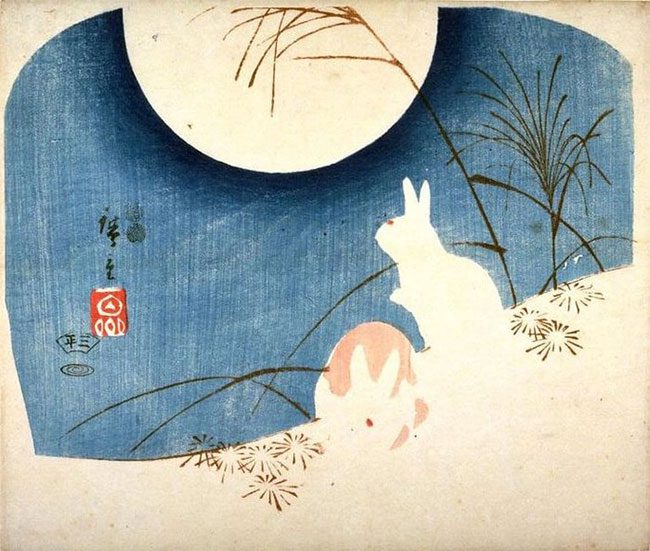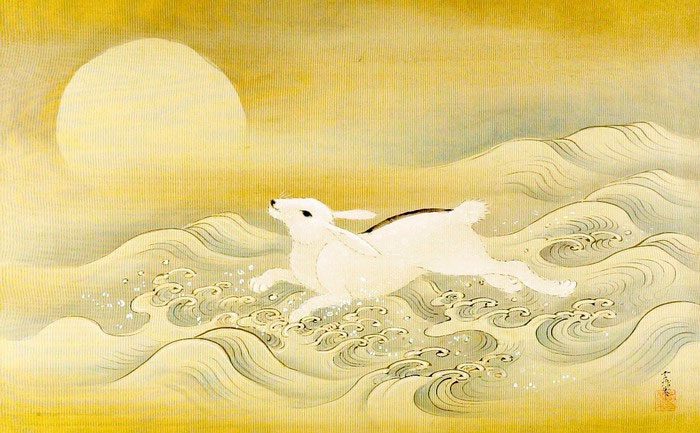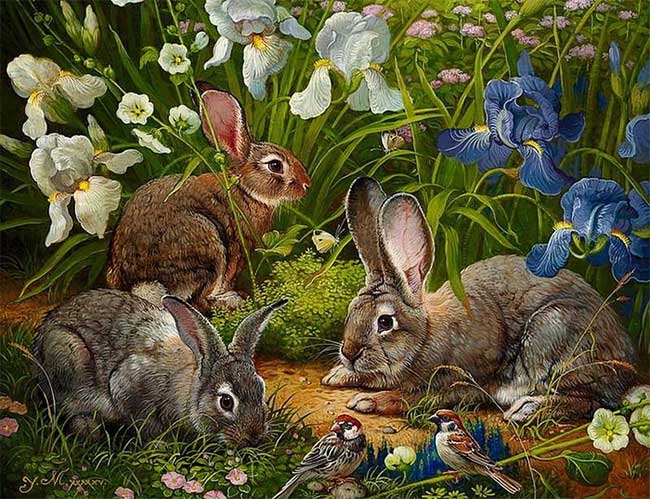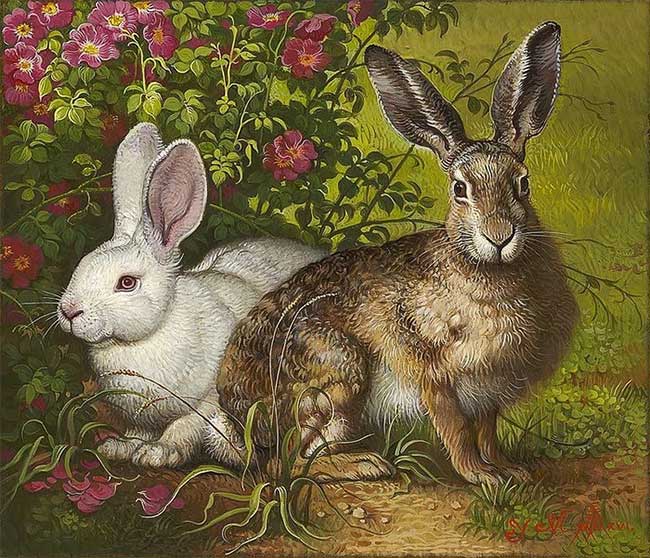The concepts of “rabbit” and “rabbit’s foot” often appear in Chinese, Korean, and Japanese cultures. In Chinese culture, the term “rabbit” is considered a symbol of luck and wealth. Meanwhile, the rabbit’s foot is seen as a symbol of longevity, health, and good fortune.
In addition to luck and prosperity, the rabbit also represents fertility, growth, and the human desire for a new life filled with happiness. This ability has led to the rabbit being chosen as the symbol of Easter in the West (the Easter Bunny).
Let’s take a journey from East to West to discover what the rabbit symbolizes in different countries.
Rabbits in Chinese Culture

Rabbits are associated with the moon in ancient Eastern mythology (Jade Rabbit pounding medicine).
The rabbit is the fourth animal in the Chinese zodiac and is also one of the luckiest zodiac signs. The rabbit is associated with wisdom, beauty, and compassion. It is also linked to the moon in ancient Eastern mythology (Jade Rabbit pounding medicine).
Ancient Chinese people viewed the rabbit as a symbol of health and longevity. Consequently, many folk remedies include rabbit parts as ingredients. The rabbit often brings auspicious signs in Chinese culture. However, this is not the case in all other Asian civilizations.
Japan
For the Japanese, the rabbit represents ambition, aspirations, and dedication. With their smaller front legs, they can climb hills more easily than descend. Hence, the image of the rabbit is also seen as a symbol of progress and human advancement.
Japan does not popularize the myth of the rabbit pounding medicine; instead, they have the rabbit making mochi (rice cakes). Rabbits are often depicted on kimonos, fans, and other decorative items in Japan as they are associated with the New Year, spring, fertility, and gracefulness.

Rabbits are often depicted on kimonos, fans, and other decorative items in Japan.
The Higashi Tenno Okazaki Shrine is a famous rabbit deity shrine in Japan. Newlywed couples and those expecting a child visit the shrine and stroke the rabbit statue for good luck.
However, not all perspectives on rabbits are positive; there is a popular variant in Japan that depicts rabbits as tricksters and deceivers in society.
The simultaneous existence of the rabbit as both benevolent and deceptive may seem hard to believe, but European culture embraces this parallel contradiction.
The United States
Totems are sacred symbols in a community. One of the nine totems of Native Americans is the rabbit. Native Americans may view the rabbit as a trickster, cunning, but also as a guide, even on par with the gods.

Some places in Central America consider this species somewhat ‘promiscuous.’
Many tribes in the Southwest also view the rabbit as a symbol of fertility and abundance. Perhaps due to the rabbit’s agility and keen instincts, ancient peoples attributed many positive traits to this species, such as bravery, quick wit, and creativity. However, some places in Central America consider this species somewhat ‘promiscuous’ (likely due to their high reproductive rate), ‘careless,’ and associated with drunkenness.
The contrast between different cultures surprisingly creates a curious balance. A symbol can be both graceful and gentle, yet also fierce and bold.
Africa
African mythology tells that despite the rabbit representing intelligence and love, seeing a rabbit cross the road is considered bad luck. Rabbit’s feet can be used as talismans for protection.
There is also a folk version that states that rabbits have the power to grant immortality to humankind.
Why are rabbits associated with the moon?
After exploring several countries, we see a common characteristic: rabbits are often linked with sensitivity, intelligence, gentleness, fertility, intuition, new beginnings, luck, agility, and most notably, the moon.
While traits like agility, fertility, and sensitivity can be somewhat inferred from the biological characteristics of rabbits, why does the moon appear here?

Rabbits can mate right after giving birth and continue to have babies the following month.
Researchers explain that it may be because rabbit births are linked to the lunar cycle. The moon changes continuously throughout the month and disappears for a short time during the new moon.
Rabbits have a very short gestation period. The time from mating to giving birth can sometimes be as short as a month. They can mate right after giving birth and continue to have babies the following month. Furthermore, rabbits give birth at night, and this monthly reproductive activity coincides with the lunar cycle. Thus, the connection between rabbits and the moon begins here.
Another more symbolic explanation is that ancient people looking up at the moon saw dark patches resembling the shape of a rabbit, thereby attributing a sacred quality to the rabbit.


















































